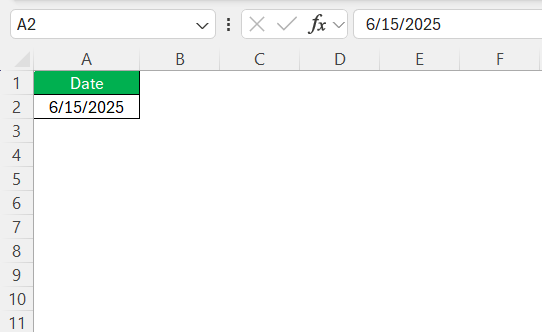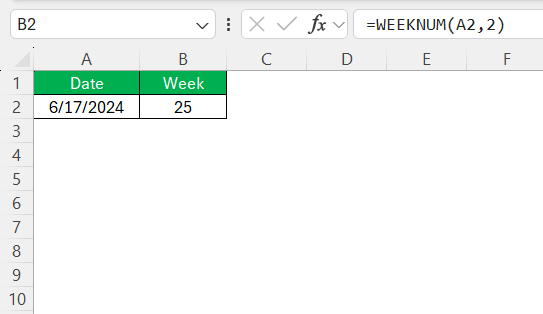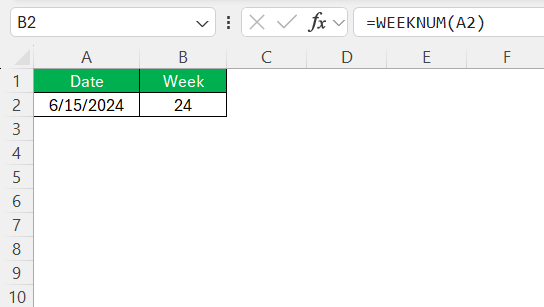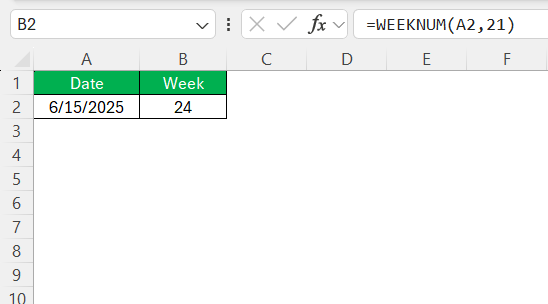When navigating through complex projects or planning events, I often find myself needing to quickly determine what week it is during the year. Week numbers can be incredibly useful, serving as a standard way to manage weeks consistently across different projects and systems. Whether I’m organizing tasks, coordinating schedules, or just satisfying curiosity, understanding how to leverage Excel’s capabilities to determine week numbers is essential. This guide will walk us through how Excel can tell us what week we are in 2024.
Key Takeaways:
- Week numbers help standardize scheduling across projects and systems.
- Excel’s WEEKNUM function can easily calculate week numbers.
- Week 1 of 2024 begins on January 1, aligning with ISO standards.
- Excel lets you customize which day your week starts with return type options.
- Using formulas like =WEEKNUM(TODAY()) keeps your tracker dynamic and updated.
Table of Contents
Understanding Week Numbers in Excel
The Concept of Week Numbers
Week numbers are a sequential numbering system that helps us identify each week within a year. Essentially, these numbers create a standardized way to track weeks, which is particularly useful in various sectors such as project management and financial reporting.
In many systems, the first week of the year is defined as the one containing the first Thursday, known as ISO week date system, or simply the week including January 1st. This numbering allows us to streamline time management and maintain consistency in reporting and planning across different regions and organizations.
Excel’s WEEKNUM Function Explained
Excel’s WEEKNUM function is a powerful tool that facilitates the tracking of week numbers throughout the year. When I use this function, it calculates the week number of a specific date, allowing for seamless integration into project timelines or schedules. The function syntax is WEEKNUM(serial_number, [return_type]).
The serial_number is the date you want to convert, while return_type lets me specify which day of the week starts the counting. By default, the week starts on Sunday, but I can choose to start on Monday or even personalize it according to ISO standards. The versatility of the WEEKNUM function makes it a favorite for anyone needing efficient week tracking.
Week Numbers for 2024 at a Glance
Having a quick reference for week numbers in 2024 can be incredibly useful for planning and organization. In 2024, week 1 begins on Monday, January 1st, aligning with the ISO standard for the week containing the first Thursday of the year. Here’s a brief overview:
- Week 1: January 1 – January 7
- Week 13: March 25 – March 31
- Week 26: June 24 – June 30
- Week 39: September 23 – September 29
- Week 52: December 23 – December 29
For weeks that span into the following year, January 1st, 2024, is used as a base to align the weeks correctly. This list provides a quick snapshot for those of us needing to integrate week numbers into calendars, and further planning. For a full year overview, Excel templates or calendar integrations are excellent tools to automate and visualize this data.
What Week Are We in 2024
Using Excel Formulas
Calculating the current week number in Excel using formulas is a straightforward process. To determine the week number of a given date in 2024, I utilize the WEEKNUM function. First, I will enter today’s date in cell A2.
Next, I would enter =WEEKNUM(A2) to get the default week number, which assumes a Sunday start.
By using these formulas, I can accurately assign week numbers to any date, tailor it according to our preferences, and seamlessly integrate this into various data tracking applications.
Accounting for Different Week Start Days
When I need to consider different starting days of the week in Excel, the flexibility of the WEEKNUM function comes into play. Different industries and regions may begin their weeks on various days, and Excel accommodates this through its optional return_type argument. For example, while the default is a Sunday start (return_type 1), if I want to start the week on Monday, I can use return_type 2.
Additionally, for those adhering to the ISO standard where the week begins on Monday and the first week of the year is the one with January 4th, I employ return_type 21.
This adaptability ensures that no matter our schedule or regional standard, we can consistently apply the same methodology for tracking week numbers accurately.
Add a Dynamic Week Tracker
I wanted my sheet to always show the current week—so I created a simple display formula:
=”We are in Week ” & WEEKNUM(DATE(2024,6,15)) & ” of 2024″
Result? A neat little sentence that updates every day:
It’s clean, dynamic, and looks good on reports or dashboards.
Practical Applications of Week Numbers
Project Management
In the realm of project management, week numbers play a pivotal role in planning, tracking, and executing tasks efficiently. By leveraging week numbers, I can create clear timelines and milestones for every phase of a project. This system simplifies communication with team members, ensuring everyone understands deadlines.
Project managers often integrate week numbers into Gantt charts and dashboards to visualize progress over time, allowing us to assess if projects are on track. Additionally, using week numbers can align resources more effectively, facilitating better allocation based on project phases. Whether I’m dealing with a tight deadline or a long-term project, week numbers offer the structure needed for precise scheduling and enhanced performance outcomes.
Financial Reporting
For financial reporting, week numbers provide a structured framework for organizing and analyzing data. Using week numbers, I can easily segment financial information into manageable units, allowing for detailed weekly reviews of expenses, revenues, and forecasts. This segmentation aids in pinpointing trends, identifying anomalies, and making adjustments as needed.
Moreover, incorporating week numbers into financial reports enhances clarity and consistency, particularly when aligning reporting periods with external stakeholders. By doing so, I ensure compliance with corporate or regulatory standards that may require such periodic reporting. For those of us working in finance, leveraging week numbers not only simplifies data analysis but also strengthens the communication and reporting process with investors and team members.
Event Planning
In event planning, week numbers serve as an essential tool for organizing and scheduling events efficiently. By utilizing week numbers, I can clearly outline the timelines for preparation, promotion, and execution stages of an event. This chronological guidance ensures that every aspect of the event, from booking venues to managing guest lists, is aligned and scheduled efficiently.
Week numbers also facilitate coordination among team members and stakeholders, providing a common reference point that simplifies tracking progress and deadlines. With week numbers integrated into planning documents and communications, I can enhance the precision of event timelines, ultimately contributing to a smooth and successful event execution. This systematic approach benefits both large scale conferences and smaller gatherings alike, ensuring essential milestones are met timely.
FAQs
1. Why should I use week numbers instead of just dates?
Week numbers simplify planning and tracking by breaking the year into manageable, consistent blocks. They help align schedules, deadlines, and reports—especially useful in project management, finance, and operations. Week numbers also make recurring reports, sprints, and timelines easier to standardize and reference across teams. Personally, it reduces confusion and makes cross-department collaboration a lot smoother.
2. What’s the difference between WEEKNUM and ISOWEEKNUM in Excel?
WEEKNUM calculates the week of a date but starts counting based on your chosen starting day (Sunday or Monday by default). ISOWEEKNUM, on the other hand, follows the ISO 8601 standard: weeks start on Monday, and the first week of the year is the one containing at least four days. For corporate and international use, ISOWEEKNUM is usually the more consistent and standardized choice.
3. Can Excel show the full date range for a given week?
Yes! You can calculate the start and end dates of a week using formulas. For example, =A1-WEEKDAY(A1, 2)+1 gives you the Monday of the week for any date in A1. Likewise, =A1-WEEKDAY(A1, 2)+7 gives you the Sunday of that same week. This is especially handy when building reports or timelines that display weekly breakdowns.
4. How do I adjust Excel to start the week on a different day?
You can control this using the second argument in the WEEKNUM function. For instance, =WEEKNUM(A1, 2) starts the week on Monday, while =WEEKNUM(A1, 1) starts on Sunday. If you follow ISO standards, just skip the custom setup and use ISOWEEKNUM(A1)—it automatically starts on Monday and applies international rules.
5. Is it possible to create a dynamic week number tracker in Excel?
Absolutely. You can use a formula like ="We are in Week " & ISOWEEKNUM(TODAY()) & " of 2024" to generate a sentence that updates daily. This is ideal for dashboards, headers in reports, or just to have a live reference. I use it regularly to keep my documents up to date without manual tweaks—it’s a small feature that saves time every single week.
John Michaloudis is a former accountant and finance analyst at General Electric, a Microsoft MVP since 2020, an Amazon #1 bestselling author of 4 Microsoft Excel books and teacher of Microsoft Excel & Office over at his flagship MyExcelOnline Academy Online Course.












